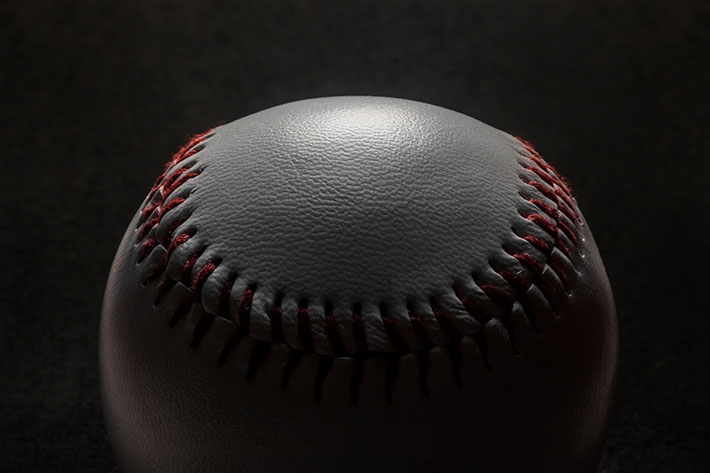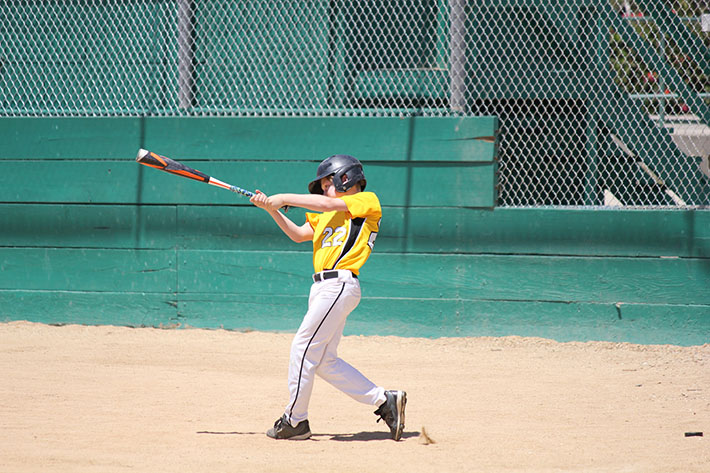
As baseball fans around the world gather to enjoy the excitement of the game, we look at ASTM International’s standards for the baseball’s bats and balls.
By David Walsh
Apr 25, 2019
When Hall of Fame baseball player Rogers Hornsby was asked what he did in the offseason, he replied, only half joking, “I stare out the window and wait for spring.” With winter giving way to spring and summer in the Northern Hemisphere, baseball fans around the world who share this sentiment are celebrating the start of the 2019 Major League Baseball (MLB) season.
The subcommittee on baseball and softball equipment (F08.26), part of the committee on sports equipment, playing surfaces, and facilities (F08), oversees standards that help external organizations govern the game loved by so many worldwide. From helping to manage the risk to youth baseball and softball players to helping protect the competitive balance of the college and professional games, the series of test methods developed by F08.26 are used in many aspects of the game. These aspects include tests for performance of the bat as well as the physical properties of the ball. When applied by various leagues and governing bodies, these measurements can have a significant impact on the way the game America calls its “National Pastime” is played.
The Ball: MLB
To those who may believe one baseball is the same as any other, think again. The baseball itself is already the subject of three ASTM International standards as well as a proposed fourth standard, a test method for seam height measurement procedure for balls (WK57370).
FOR YOU: Certifications for Chest Protectors
The most well-known of these standards is the test method for measuring the coefficient of restitution (COR) of baseballs and softballs (F1887), which recently gained notoriety for being at the heart of a passionate, nationwide baseball debate in the United States. COR is defined as the ratio of the final to initial relative velocity between two objects after they collide. To illustrate, if you drop an object and it does not bounce, it has a COR value of 0. If it bounces back to its original height, it has a COR value of 1. Clearly then, a baseball’s COR can have a significant impact on the game.
In 2017, with baseballs traveling out of MLB stadiums at an alarming — and eventually record-setting — rate, the COR metric, otherwise unknown to most fans and players, came to the forefront. With baseball purists upset at the possibility that the competitive balance had been tipped toward the hitter, many theorized that the ball was “juiced” or intentionally manufactured to travel farther. The COR metric began popping up as a possible explanation in media outlets from USA Today to Chemical & Engineering News.
With the controversy simmering that season, MLB felt compelled to produce testing data obtained by the Baseball Research Center at the University of Massachusetts, Lowell, using F1887, a test method first published in 1998. The test itself involves firing a baseball from a ball-throwing device such as a pitching machine at a strike plate made of either metal or wood, and then measuring ball speed before and after impact.
The data produced by MLB proved conclusively that the COR value of their baseballs fell within the accepted range of 0.514 to 0.578. This quieted critics to an extent, though the precise reason for the unusual spike in home runs that season remains open to debate.
The Ball: NCAA
ASTM International’s proposed test method for seam height measurement (WK57370) relates to a second recent issue in the game of baseball, one that caught the attention of college baseball fans and players in the United States in 2015.
Prior to 2015, the National Collegiate Athletic Association (NCAA) used a baseball with “high” seams, or seams that were visible (and able to be gripped) above the curve of the ball. In 2015, the season when the NCAA shifted to a new, “flat-seamed” baseball, nearly 3,000 more home runs were hit across the country, an increase of 27 percent over 2014.
Many observers felt the new flat-seamed baseball was responsible for the increase, and according to Jeffrey Kensrud of Washington State University and chairman of the F08.26 subcommittee, this may have been at least partially true. Kensrud is the assistant director of Washington State’s Sports Science Laboratory, which is NCAA certified and contracts with bat and ball manufacturers to verify compliance and evaluate prototype products.
Kensrud’s laboratory has conducted research on seam height in conjunction with the NCAA and ball manufacturer Rawlings. “What we were finding back in the 2013–2014 timeframe was that the seam height actually had a very large effect on the aerodynamic drag of the ball, such that when the ball was hit, it could potentially travel farther or shorter,” he says.
In the wake of the NCAA’s 2015 shift to the flat-seamed ball and the coinciding power surge, it became clear that seam height could have a significant impact on the way the game of baseball was played. That’s when Kensrud and others saw the need to define seam height to a universally agreed upon standard and potentially categorize baseballs going forward.
“That’s when we [F08.26] really started paying attention to the surface of the ball,” he says. “And we said, ‘OK, nobody is measuring things the same way, from ball-maker to ball-maker or lab to lab, and we need some standard that explains it all, details it out, and even suggests a fixture that might measure it.’ And ASTM is a great place for that.”
The test method proposed by the subcommittee would lead to a common frame of reference for baseball’s governing bodies when measuring seam height, enabling them to better set the parameters for the respective levels of the game.

New rules for youth baseball bats were instituted prior to the 2018 season.
The Bat: Youth Baseball
The properties of the bat can also impact the game in noticeable ways. The baseball bat is the subject of four standards developed by F08.26. To find an example of the effect the bat can have on the game, one need look no further than a local youth baseball league in the United States.
As youth baseball coaches, parents, and players will attest, prior to the 2018 season, youth hitters were driving baseballs a lot farther and at higher velocities than they are today. Using aluminum and composite metal bats made to specifications that differed by manufacturer, these pre-2018 bats possessed bat-ball coefficients of restitution (BBCOR) values that allowed balls to travel farther and faster, and the result was a significant advantage for hitters.
BBCOR is a relative value, based on both the speed of the swing and the speed of the pitch, so the size and strength of the players involved is a key factor. BBCOR is determined using the test methods for measuring high-speed bat performance (F2219) and measures the energy transfer from the barrel of the bat to the ball. According to Lloyd Smith, Ph.D., director of Washington State’s Sports Science Laboratory, former F08.26 chair, and an adviser to both USA Baseball and Major League Baseball, the test itself is very simple.
“The bat is stationary, and then we fire a ball at a high speed,” Smith says. “We’ve shown scientifically that if the relative speed in the lab matches what you have in play, then you get the same energy dissipation, or BBCOR. So in baseball, we model a 70 mile per hour swing and a 70 mile per hour pitch, and in our lab, we’re firing a ball at a stationary bat at 140 miles per hour.”
Seeking to reshape the competitive balance of youth baseball in the United States as well as reduce risk, amateur baseball’s governing body (USA Baseball) mandated in 2018 that all youth bats must have lower BBCOR values to make them more “wood-like” and presumably reduce the offensive advantage that had emerged. In the case of youth hitters, this meant a bat had to have a BBCOR of 0.53 to receive the “USA Baseball” stamp and be certified for use in the youth leagues they govern, which included Little League and Cal Ripken, two of the largest youth baseball organizations. The bats previously used in these leagues had BBCOR values ranging from 0.56 to 0.60.
The effect was dramatic, as illustrated by the 2018 Little League World Series. After setting a record in 2015, when 87 home runs were hit in the tournament, and then watching 61 home runs fly over fences in the 2017 tournament, a total of just 19 home runs were hit in 2018. While various factors can be cited to explain the decline in power, the new bats mandated by USA Baseball were among them.
A Game of Numbers
There is a popular saying that holds: “Baseball is a game of numbers.” So perhaps it should come as no surprise that baseball’s various governing bodies, in contrast to many other sports, have embraced ASTM and the use of standards to govern the game. In a sport in which a common statistic like batting average is measured down to thousandths of a percentage point, the idea of assigning values to bat barrels and baseballs seems to be more readily accepted.
“Baseball is unique in that this sport seems to have embraced ASTM so much in equipment regulation,” says Smith. “I don’t think that in other sports where equipment is such an important part that they’ve so universally embraced ASTM methods.”
Events such as the Little League World Series and the World Baseball Classic testify to baseball’s growing popularity around the world while thriving, decades-old youth and professional leagues in Japan, the Dominican Republic, and Taiwan demonstrate the game’s global staying power. It is clear that with this growth and increased popularity will come an increased need for standards to govern the game loved by so many. And with the strong relationships forged between the F08.26 subcommittee and baseball’s governing bodies, it is clear that need will be effectively met.
May / June 2019